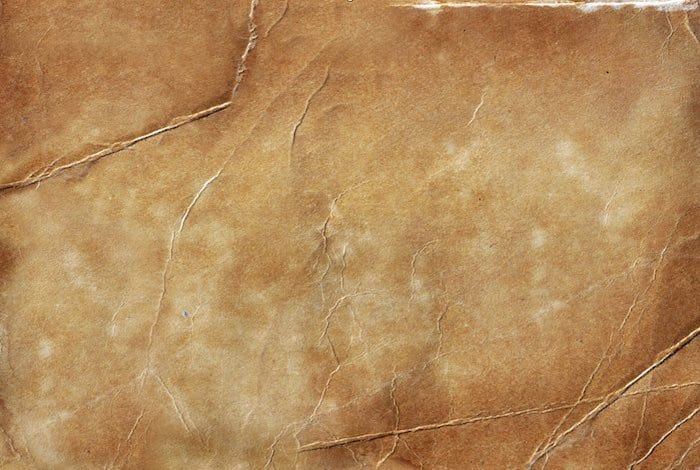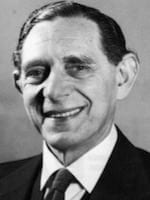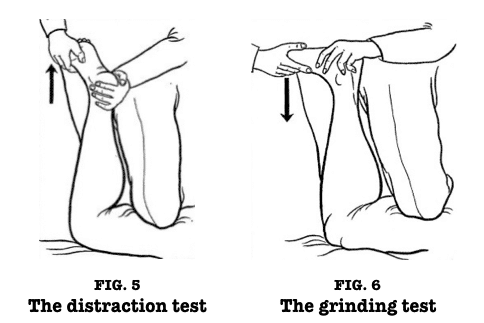Alan Apley
Alan Graham Apley (1914 – 1996) was a British Orthopaedic Surgeon and educationalist.
Author of the essential orthopaedic reference text first published in 1959: Apley’s System of Orthopaedics and Fractures, now in it’s 10th edition (2017).
Expert Postgraduate surgical educator set up the ‘Pyrford Postgraduate FRCS Course’ better known as the ‘Apley Course‘. Serving more than 5,000 students over 15 years with satellite courses in New York City and Toronto.
In 1947 Apley described posterior examination of the knee to determine damage to the knee meniscus. This is more commonly referred to as the Apley Test [*Apley grind test’, Apley Compression test]. The 8th floor, North Wing of the St Thomas’ Hospital, London is known as the Alan Apley Ward
Biography
- Born on November 10, 1914 in London, UK
- 1938 – Graduated MBBS, University College Hospital, London
- 1941 – Fellow of the Royal College of Surgeons of England
- 1947 – Consultant orthopaedic surgeon Rowley Bristow Orthopedic Hospital at Pyrford
- 1959 – 1st edition: Apley’s System of Orthopaedics and Fractures – unillustrated paperback with blank pages for notes. Continued for 5 more editions prior to engaging Solomon as a second author
- 1972 – Director of Orthopaedics at St. Thomas Hospital; elected to council of the Royal College of Surgeons
- 1983-1985 Vice president Royal College of Surgeons
- 1984 – Editor of The Journal of Bone and Joint Surgery
- Honorary Medal of the Royal College of Surgeons of England
- Died on December 20, 1996
Medical Eponyms
Apley grind test [Apley compression test] (1947)
Knee examination for meniscus tear by pressure and rotation of the foot with the patient lying face down and the knee flexed 90 degrees.
For this examination the patient lies on face down…the surgeon grasps one foot in each hand, externally rotates as far as possible, and then flexes both knees together to their limit (Fig. 3)
The surgeon then applies his left knee to the back of the patient’s thigh (Fig. 4). It is important to observe that in this position his weight fixes one of the levers absolutely. The foot is grasped in both hands, the knee is bent to a right angle, and powerful external rotation is applied.
Next, without changing the position of the hands, the patient’s leg is strongly pulled upward, while the surgeon’s weight prevents the femur from rising off the couch (Fig. 5). In this position of distraction, the powerful external rotation is repeated
Then the surgeon leans well over the patient and, with his whole body weight, compresses the tibia downward onto the couch (Fig. 6).
If the addition of compression has produced an increase of pain, this grinding test is positive, and meniscal damage is diagnosed.
Major Publications
- Apley AG. The diagnosis of meniscus injuries; some new clinical methods. J Bone Joint Surg Am. 1947 Jan;29(1):78-84 [Apley grind test]
- Apley AG. Tunnel syndromes in the upper limb. Practitioner. 1956 Dec;177(1062):722-4
- Apley AG. Apley’s System of Orthopaedics and Fractures Hodder Arnold. 1959
- Apley AG. Intelligent Kneemanship. Postgrad Med J. 1964 Sep; 40(467): 519–520
- Apley AG. Commonly missed orthopaedic injuries. Postgrad Med J. 1967 Sep; 43(503): 568–573
- Apley AG, Millner WF, Porter DS. A follow-up study of Moore’s arthroplasty in the treatment of osteoarthritis of the hip. J Bone Joint Surg Br. 1969 Nov;51(4):638-47.
- Apley AG. Ulnar nerve paresis–a simple test. Hand. 1980 Feb;12(1):81
- Apley AG, Wientroub S. The sagging rope sign in Perthes’ disease and allied disorders. J Bone Joint Surg Br. 1981 Feb;63-B(1):43-7.
- Apley AG. Instability of the knee resulting from ligamentous injury. A plea for plain words. J Bone Joint Surg Br. 1980 Nov;62-B(4):515-6.
- Apley AG. The evolution of hip replacement. Trans Med Soc Lond. 1988-1989;105:21-4.
References
Biogrpahy
- In Memoriam: Alan Graham Apley. BMJ 1997; 314: 981
- Mostofi SB. Alan Graham Apley In: Who’s Who in Orthopedics. Springer 2005: 13-14
- Biography: Apley, Alan Graham (1914 – 1996). Plarr’s Lives of the Fellows Online. Royal College of Surgeons of England
- Bibliography. Apley, Graham Alan. WorldCat Identities
Eponymous terms
- Agresti D, Jeanmonod R. Apley Grind Test. StatPearls Publishing; 2017

eponym
the person behind the name
Irish doctor MB BCH BAO, NUI Gallway. Currently Emergency Medicine RMO in Perth, Western Australia. Interests in emergency medicine, GAA and exploring WA




